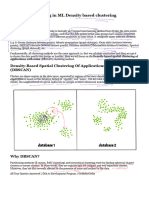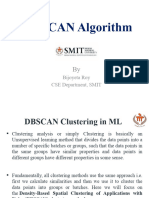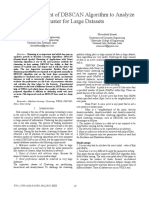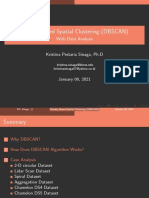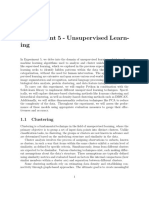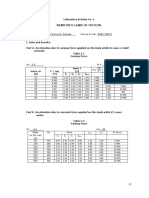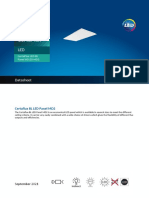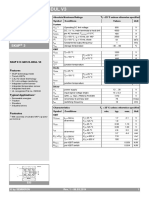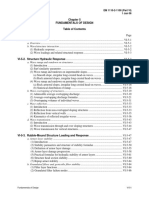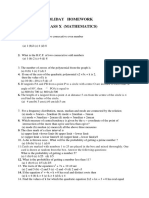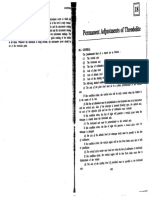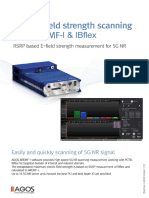0% found this document useful (0 votes)
62 views10 pagesDbscan Clustering 1
DBSCAN (Density-Based Spatial Clustering of Applications with Noise) is an unsupervised clustering algorithm that efficiently identifies clusters of varying shapes and sizes while handling outliers. It requires two parameters, Epsilon and Min Points, and is preferred over K-Means when the data lacks a spherical shape or the number of clusters is unknown. While DBSCAN has advantages such as handling noise and not requiring prior knowledge of clusters, it is sensitive to hyperparameters and struggles with varying density clusters.
Uploaded by
arslanraza2022Copyright
© © All Rights Reserved
We take content rights seriously. If you suspect this is your content, claim it here.
Available Formats
Download as PPTX, PDF, TXT or read online on Scribd
0% found this document useful (0 votes)
62 views10 pagesDbscan Clustering 1
DBSCAN (Density-Based Spatial Clustering of Applications with Noise) is an unsupervised clustering algorithm that efficiently identifies clusters of varying shapes and sizes while handling outliers. It requires two parameters, Epsilon and Min Points, and is preferred over K-Means when the data lacks a spherical shape or the number of clusters is unknown. While DBSCAN has advantages such as handling noise and not requiring prior knowledge of clusters, it is sensitive to hyperparameters and struggles with varying density clusters.
Uploaded by
arslanraza2022Copyright
© © All Rights Reserved
We take content rights seriously. If you suspect this is your content, claim it here.
Available Formats
Download as PPTX, PDF, TXT or read online on Scribd
/ 10
